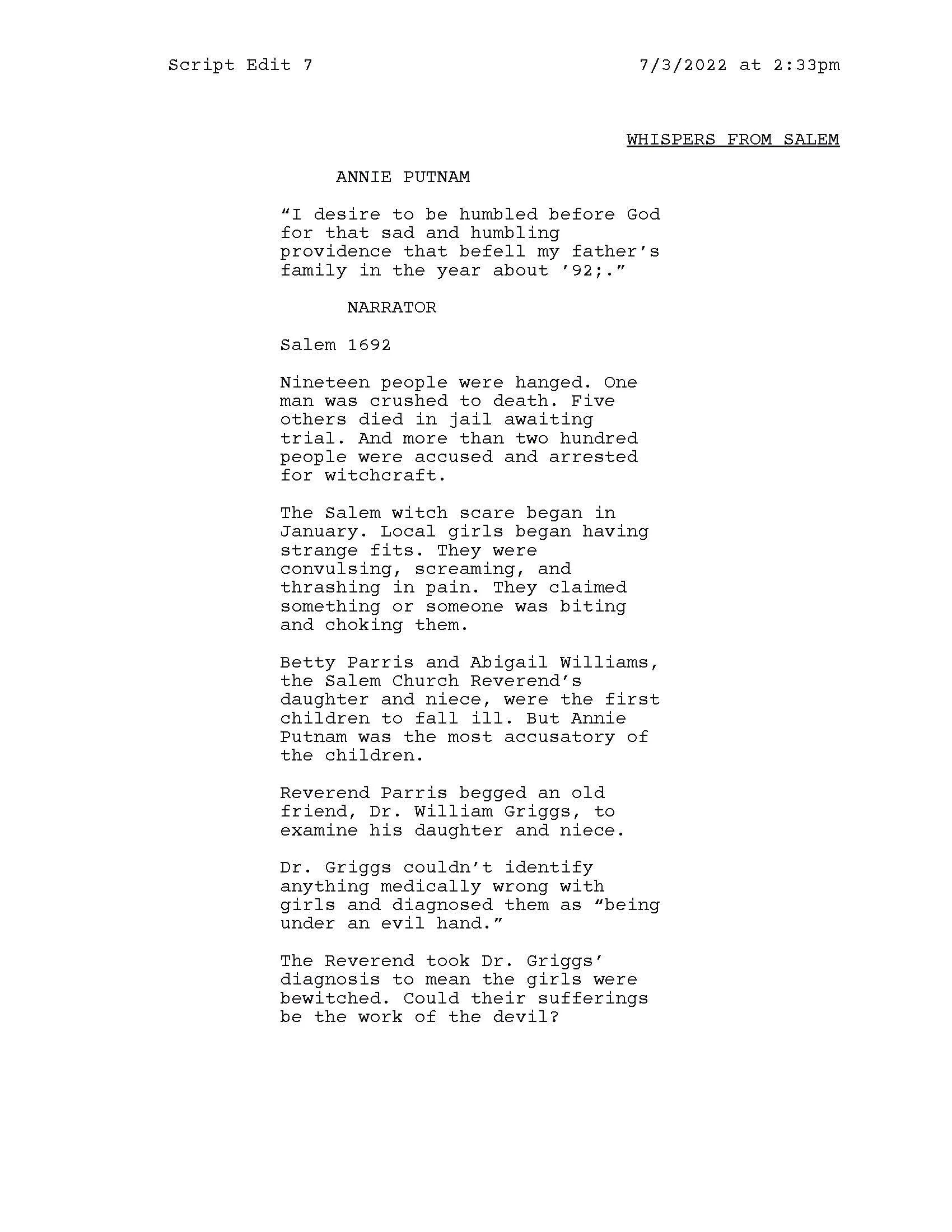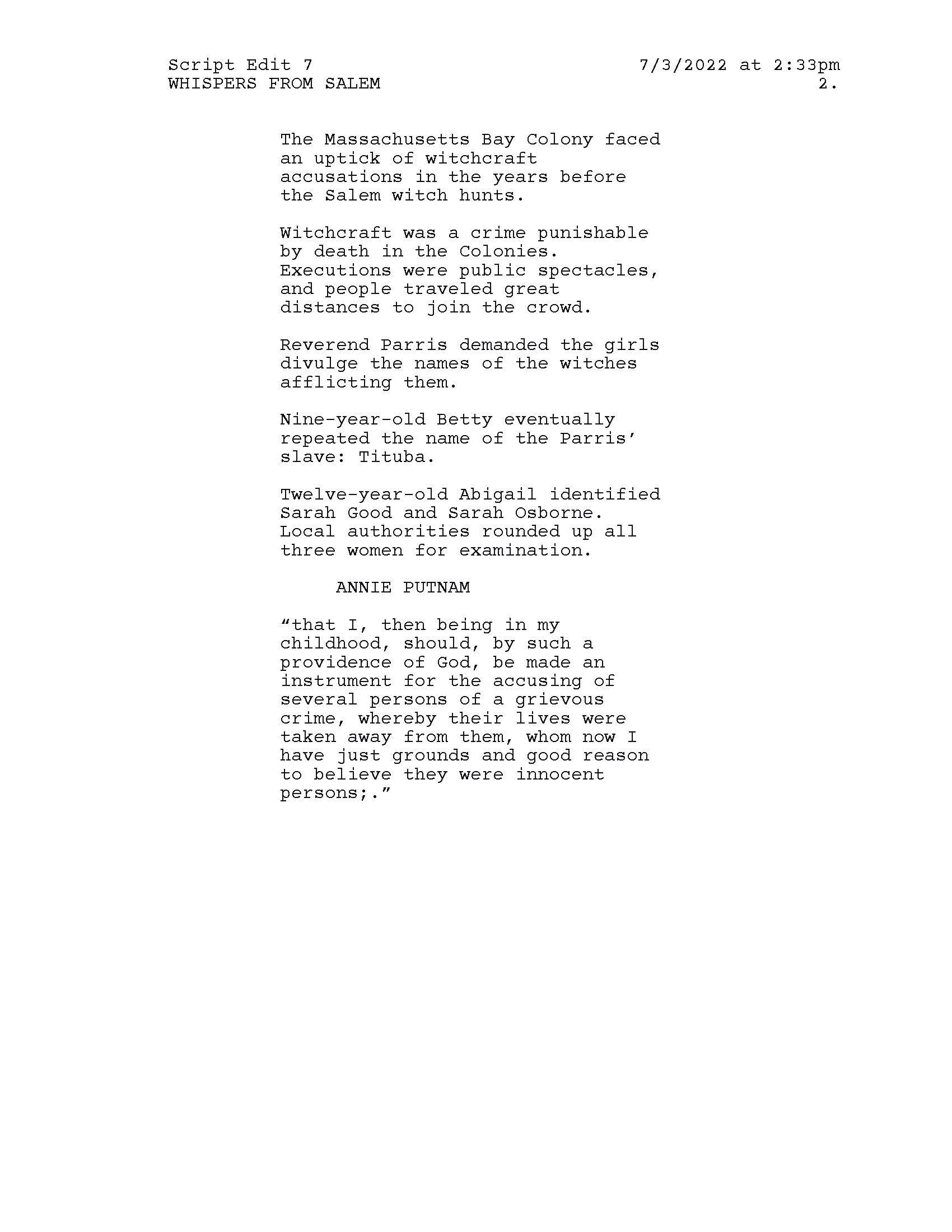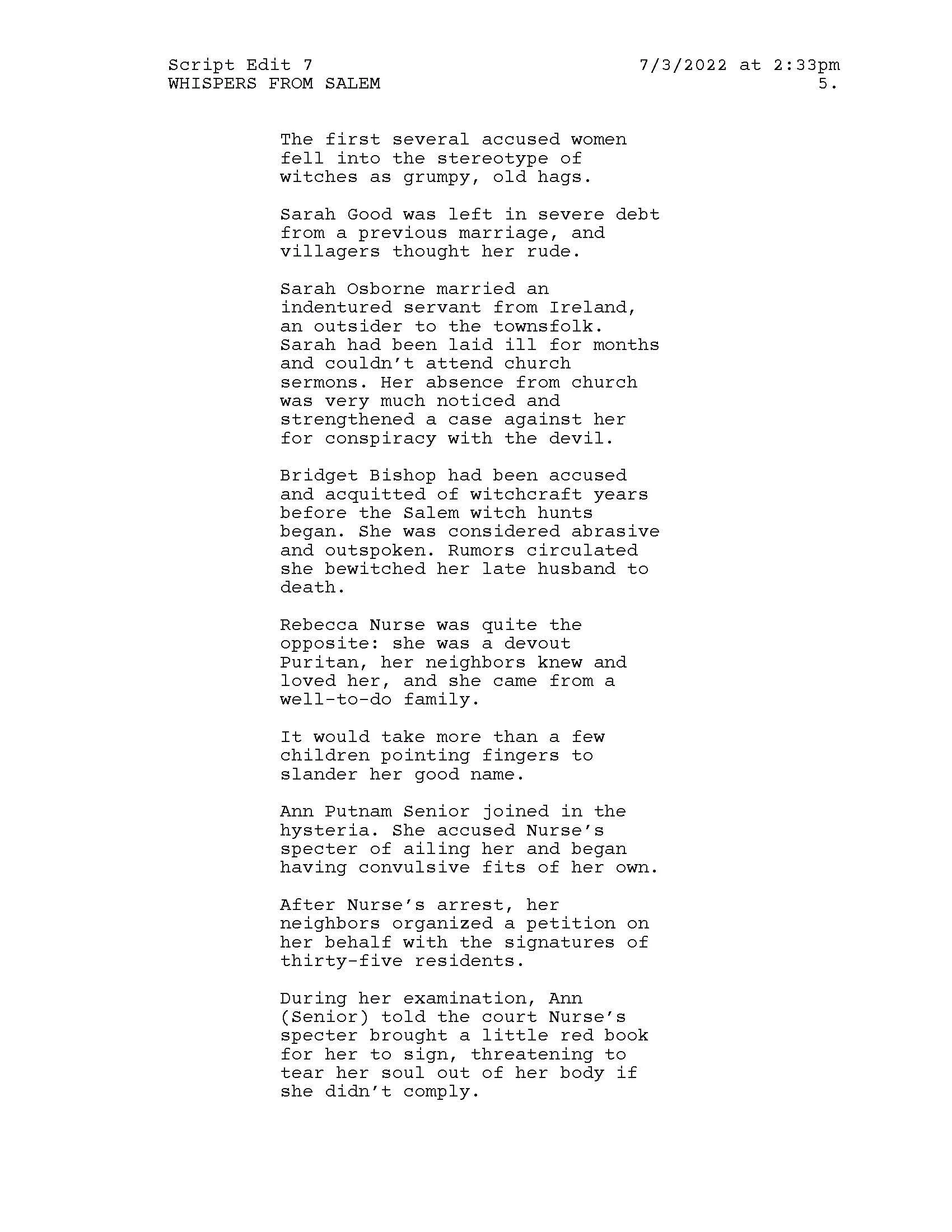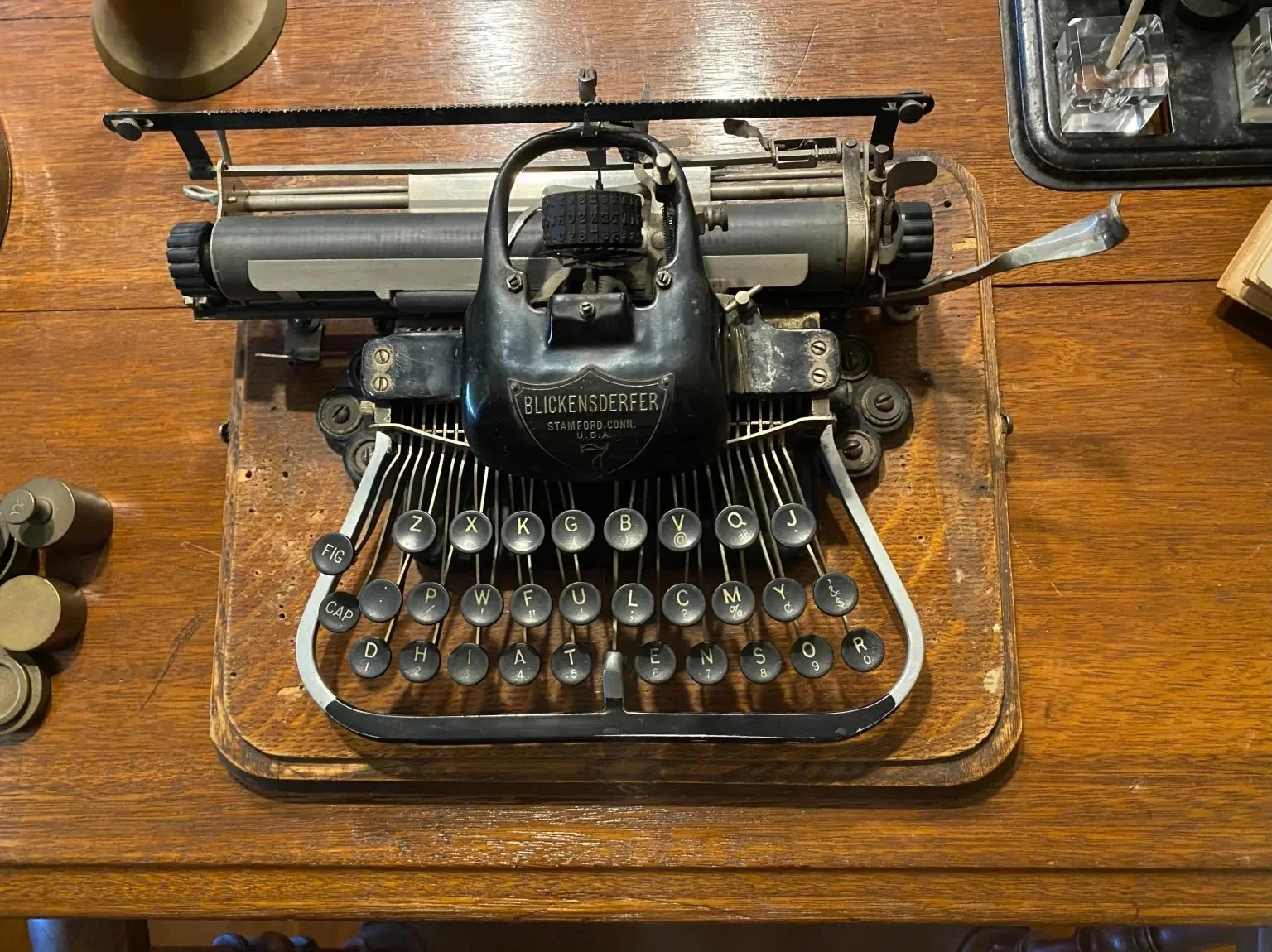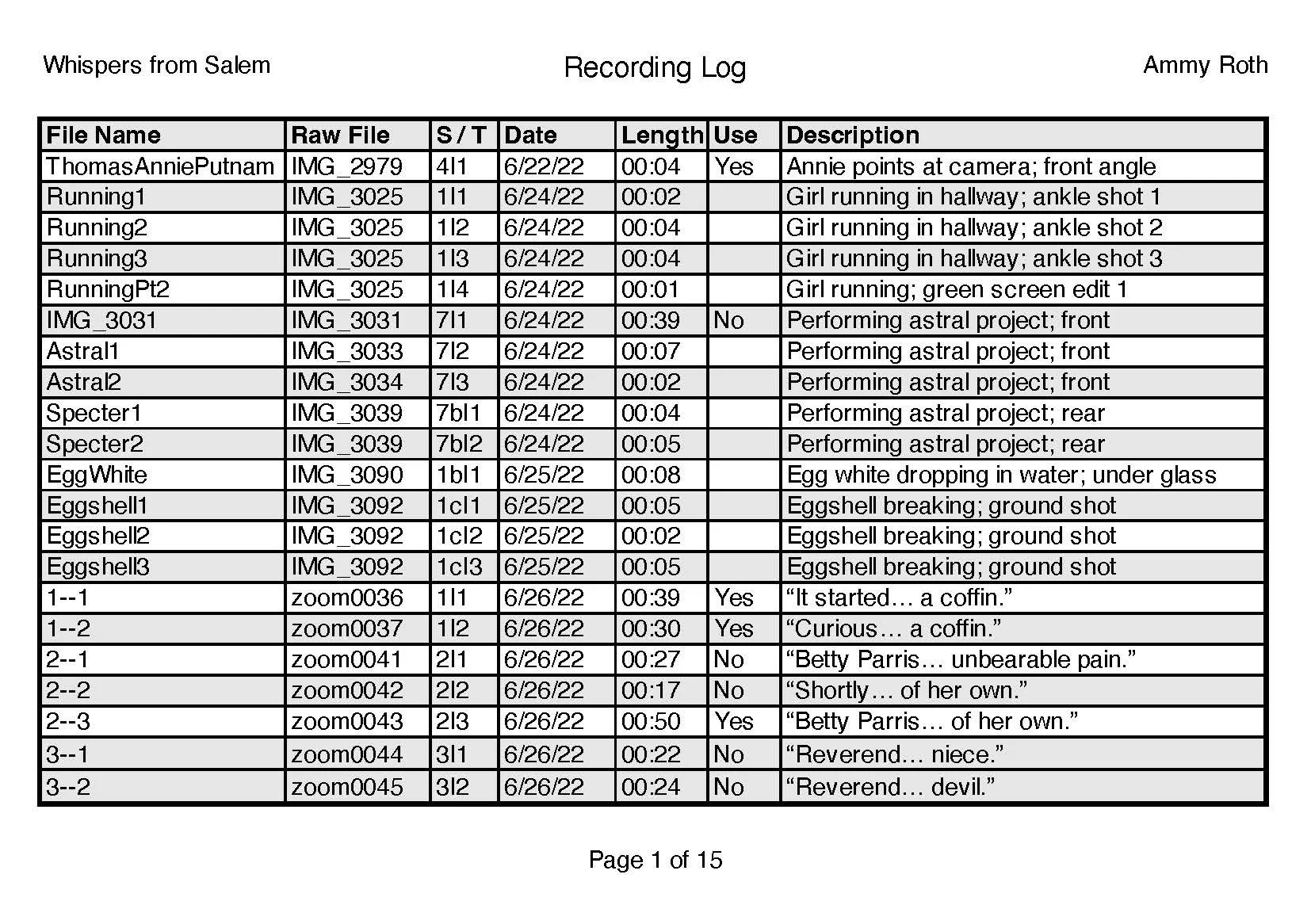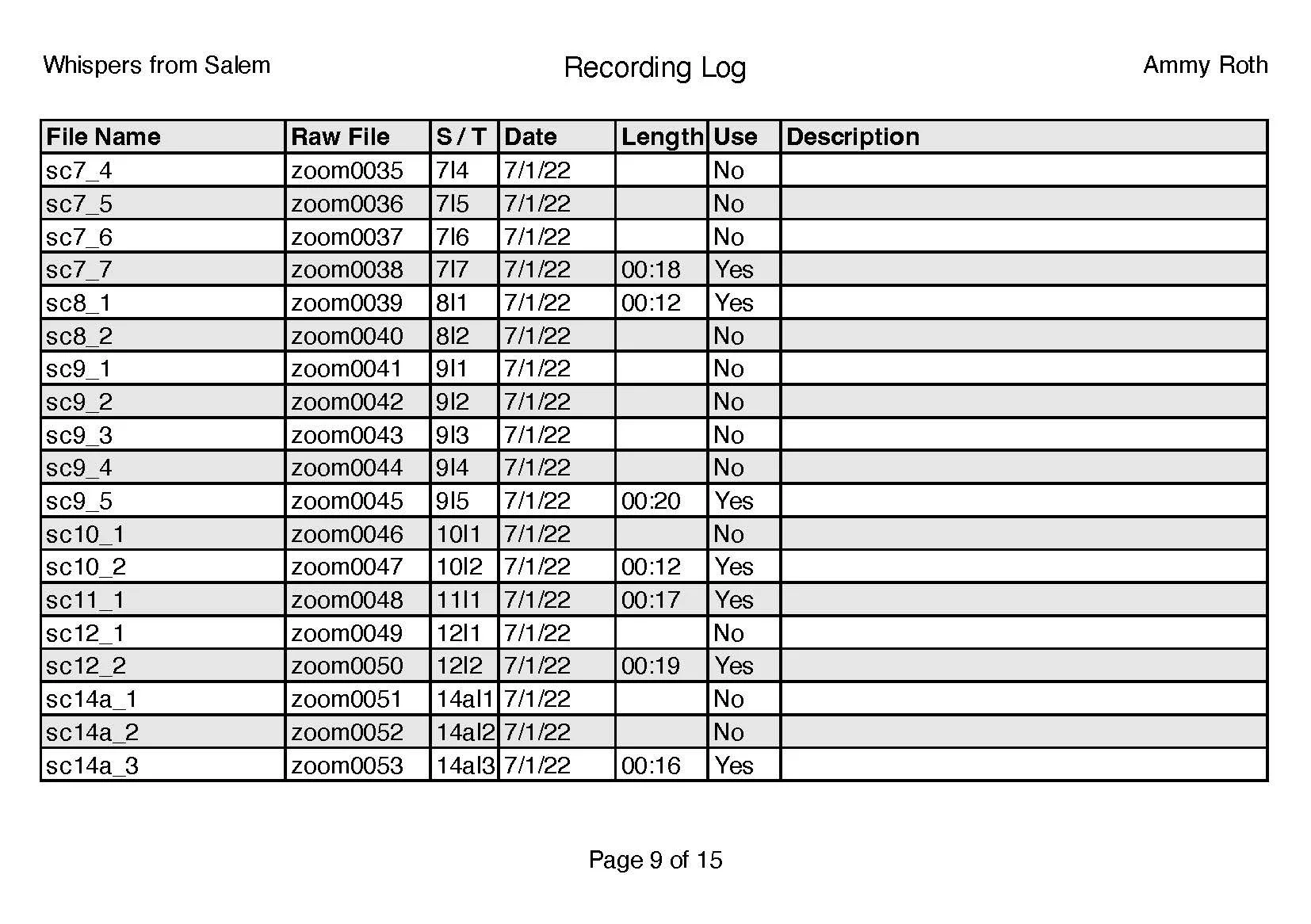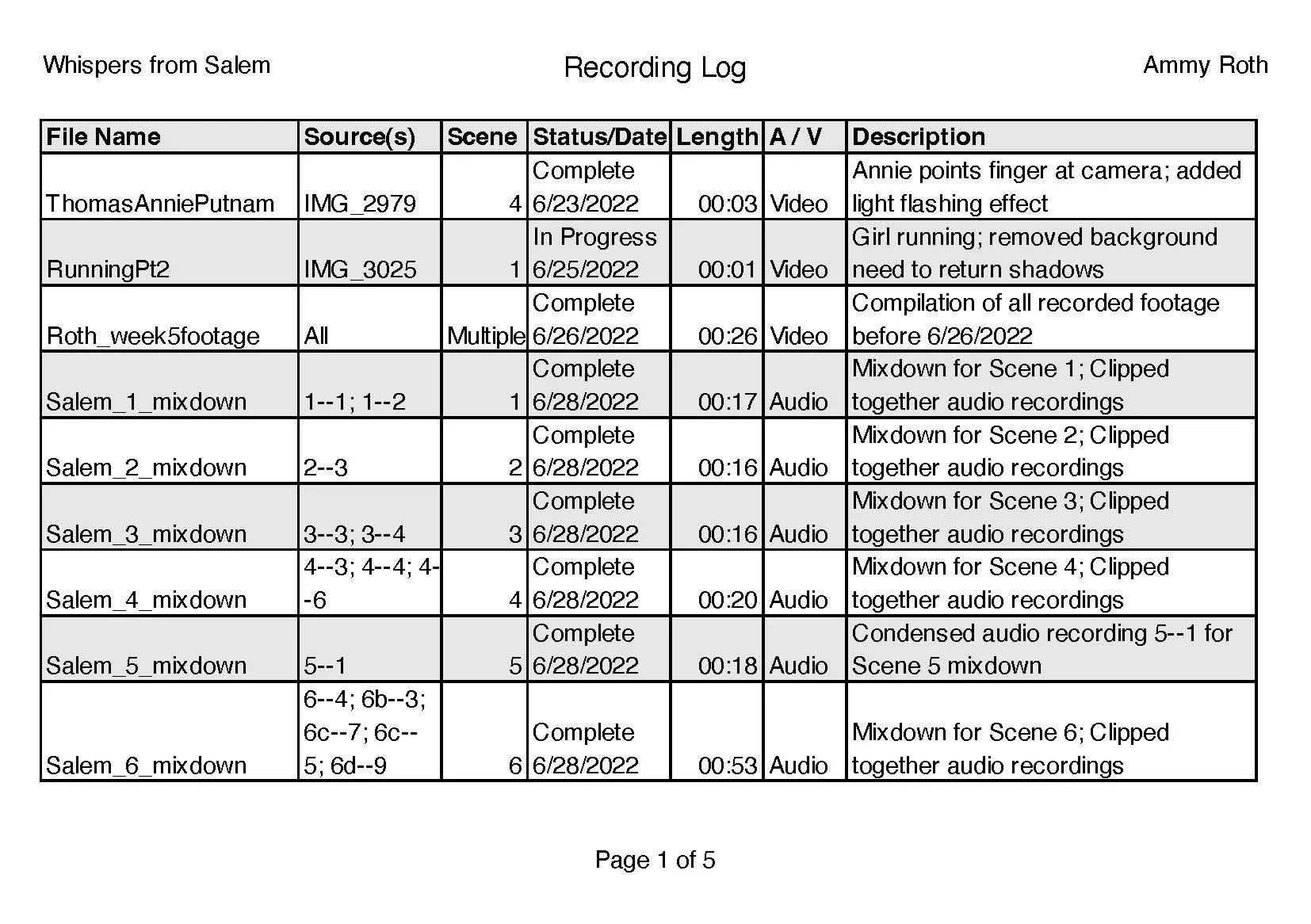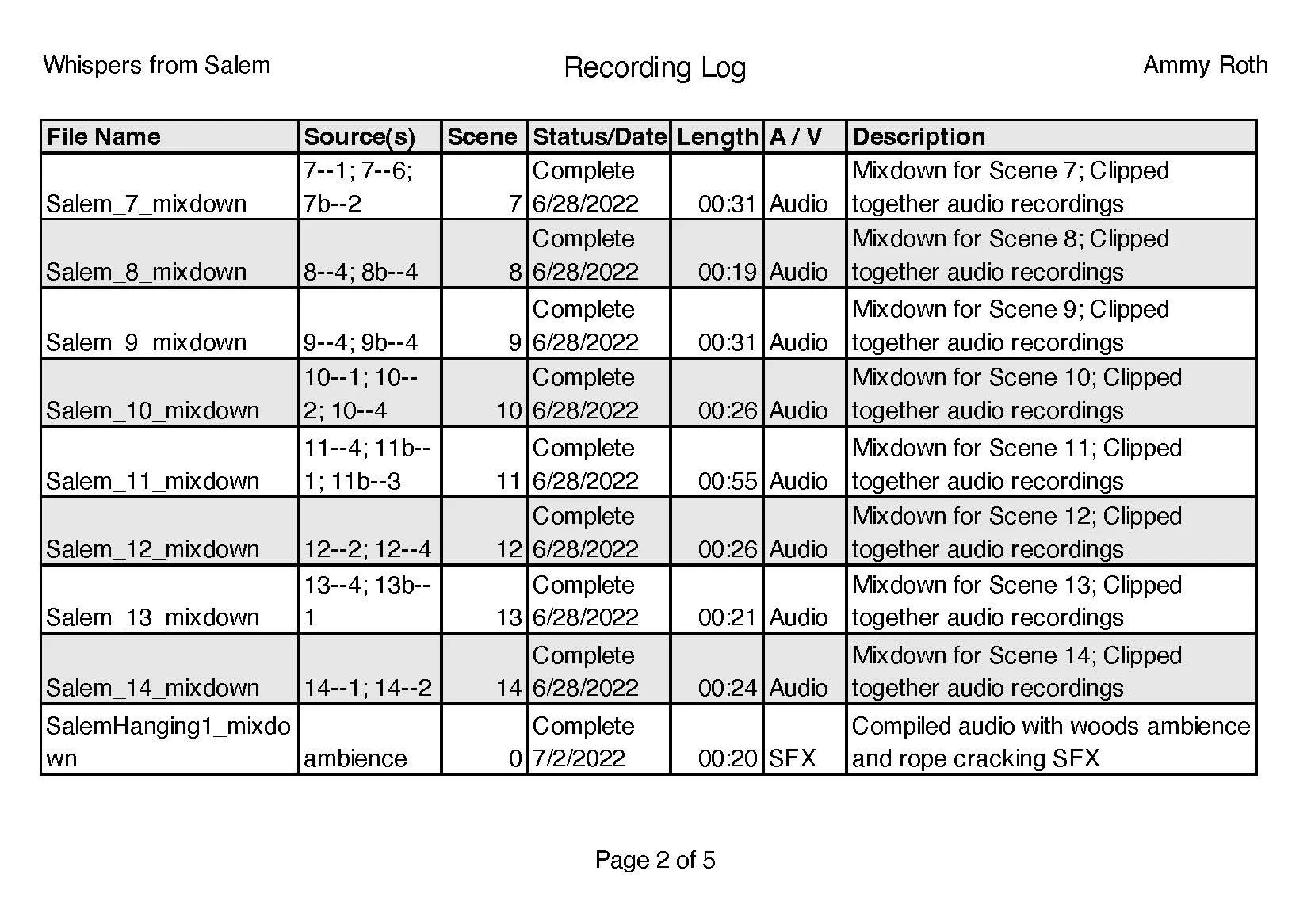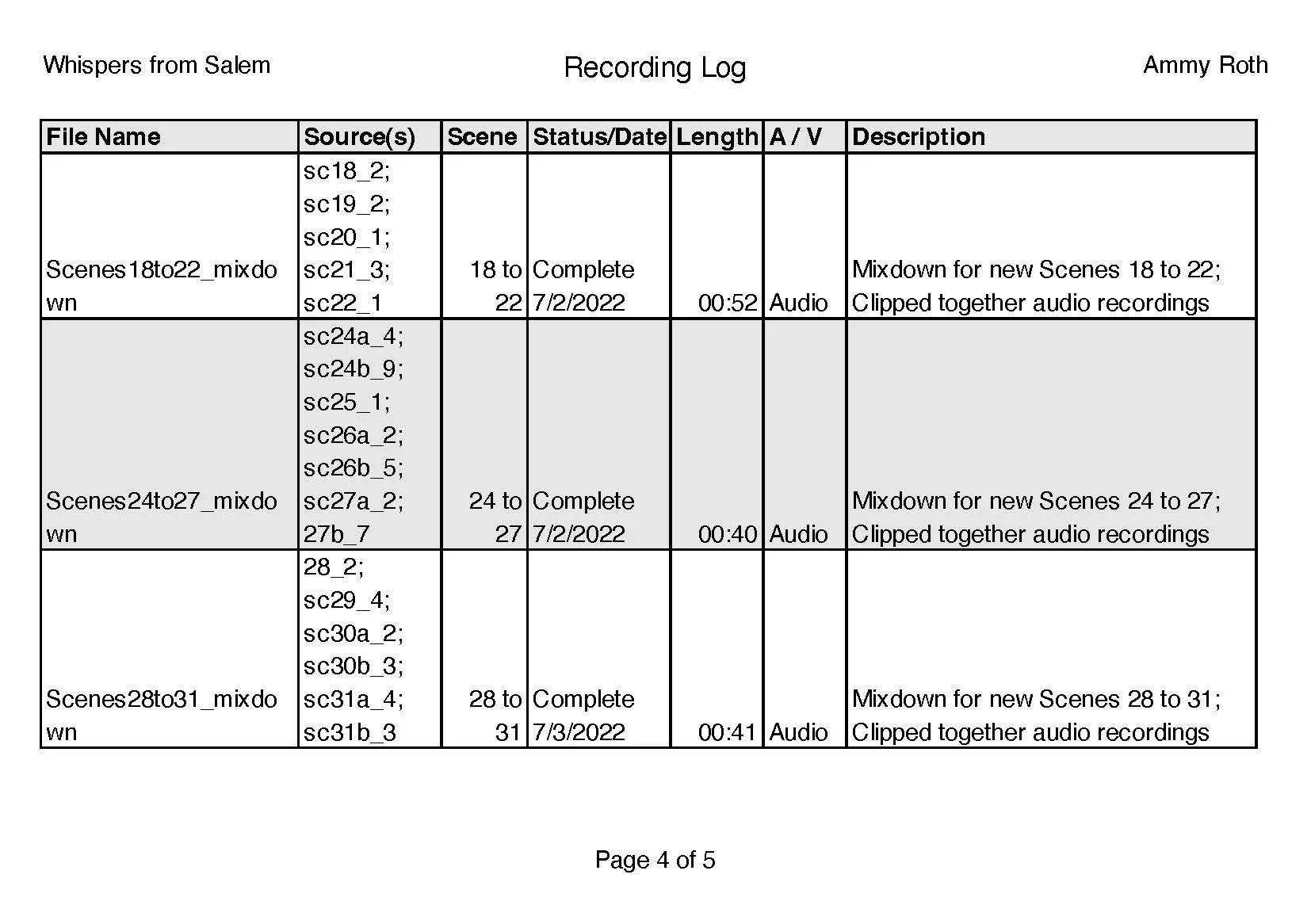Sorcery and Salem: Wrapping Up a Mini-Documentary
I’ve been working on creating a mini-documentary for the last few weeks. Finally, this week, I brought it to life. Planning and pre-production for any project can be meticulous. For this project, I’ll create a mini-documentary in just seven weeks. Unfortunately, such a tight deadline created additional difficulties in the pre-production stages of the project. I adapted the pre-production documents as the process continued since circumstances changed and new opportunities arose (or disappeared).
In the first two weeks, I focused on creating a project proposal and project plan. Then, I wrote the script, edited the script, and started building pre-production documents in the third and fourth weeks. Finally, last week was week five, and I started recording videos for the mini-documentary.
This week was all about recording the voice-over narration. However, I was staying with family, so I didn’t have any of my usual recording accommodations. I set my Zoom H1n recorder on a desk and started recording on Monday morning.
I realized I hadn’t labeled any scenes once I started recording sequences. Taping several sequences repeatedly became confusing rather quickly, so I spent a few minutes adding scene numbers to sequences in my pre-production script. The recording process took a few hours with breaks and audio quality checks.
Before editing any of the audio, I listened to the recordings and changed the names of the audio files to their respective scene numbers. Then, I created multitrack sessions in Adobe Audition for each scene. Finally, I grouped the audio files for each scene and clipped them down to the sequences I wanted to keep.
Editing Scene 1 in Adobe Audition
My narration sounded monotonous, so I wanted to spice things up. First, I edited the script to avoid sounding like a history lecture. Next, I added a recording of Annie Putnam’s confession as the script’s main “story” element. I liked the idea of creating a bookend for the script with Annie’s confession, but it would overwhelmingly long to split in half. So instead, I separated it into multiple parts throughout the script.
I took a short field trip to the Stagecoach Inn Museum in Thousand Oaks, California, on Wednesday. The museum wasn’t quite the right period I wanted, but I needed to make do with what I had available. The Stagecoach Inn was originally built as the Grand Union Hotel in the 1870s but had been remodeled several times throughout the years. The property also houses a replica of an 1850s cabin and 19th-century schoolhouse. The interior of the museum was staged with antique furniture and decorations. While recording at the museum, I tried to capture footage with items that would be appropriate for 17th-century New England.
After editing my script, I updated my pre-production script. I also changed the labeling for scene numbers. Since I edited the script after my first round of audio recording, I needed to tape the new script. I set up a recording “studio” in the closet with a few pillows, sheets, and suitcases. The primary goal was to reduce the amount of echo in an empty closet as well as background noise from the house. Once I had the “studio” ready, I grabbed my water bottle, script, and Zoom H1n recorder.
Before recording this time, I practiced some vocal warm-ups (from Gary Terzza on YouTube) and did a quick word-vomit of the most important details I could remember about the Salem Witch Trials. This practice helped me get my vocal cords moving, work through difficult syllables, and (most importantly) made me start thinking specifically about the topic of my mini-documentary.
While taping the voice-over audio, I slated each recording with the scene and take numbers to make labeling easier later in the editing process. Then, I practiced each scene before recording the first take. About halfway through the script, I took a short break to walk around.
I transferred the audio files from the Zoom recorder to an external hard drive. Then, I went through the files and labeled them by scene and take number. Next, I opened all takes to find the best recording for each scene. Then, I used the pre-production script to group scenes together. Finally, I clipped the grouped audio files together in Adobe Audition.
By Sunday, I had recorded all the voice-over narration I needed for the script. But I still needed to record Annie Putnam’s confession. Annie apologized in 1706 to earn full membership in the church. Though her confession was written and read aloud by the minister at the time, I didn’t have many options for a male voice. So, I read the part, again in the closet recording “studio.” I taped several recordings but tried to read through the entire speech at once.
What do I have left?
I still have several things left on my to-do list to have this mini-documentary ready to publish by the end of the week. So I decided to add more details to my weekly plan.
Sunday/Monday: Edit Annie’s confession audio and edit all audio together
Monday: Film remaining video sequences
Monday to Friday: Add images, videos, and graphics to the video file with audio and edit the video
Friday/Saturday: Publish and share the project.



